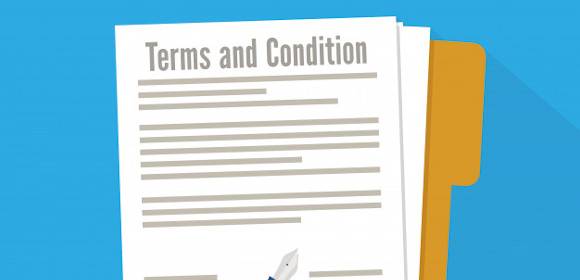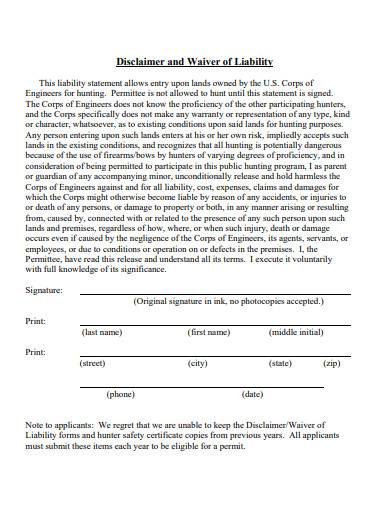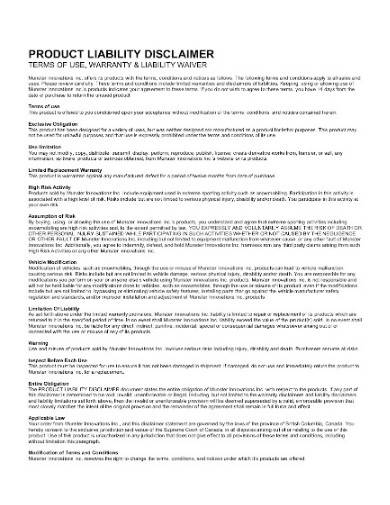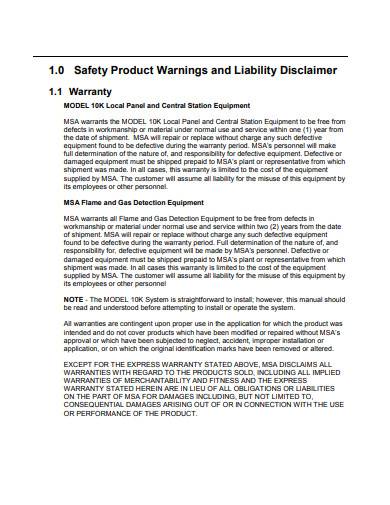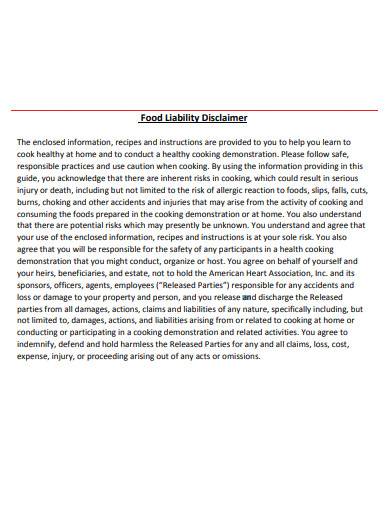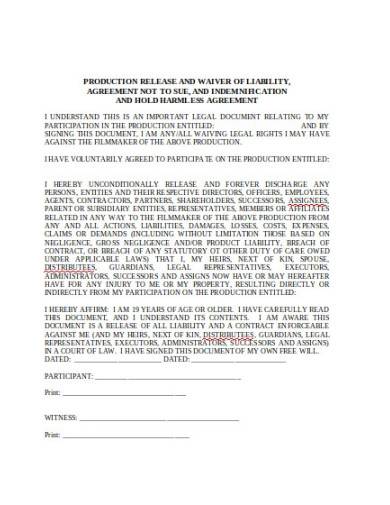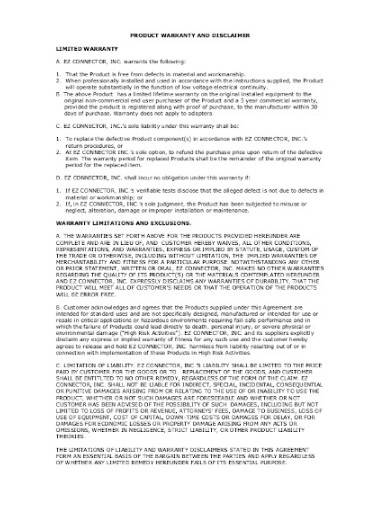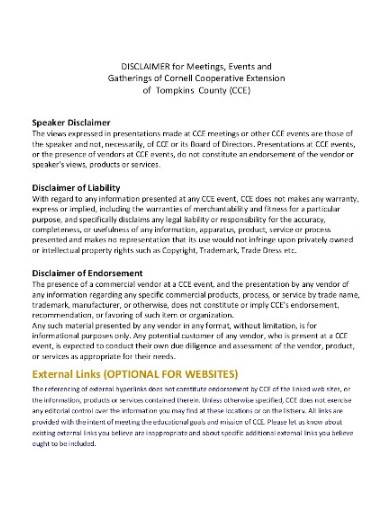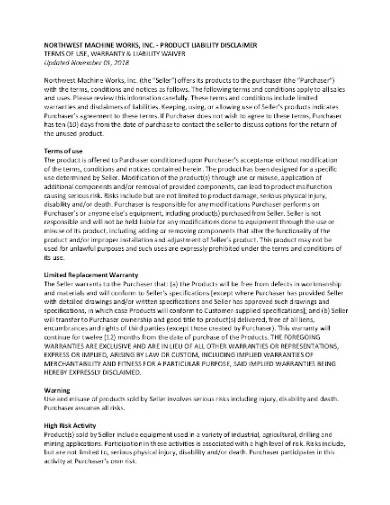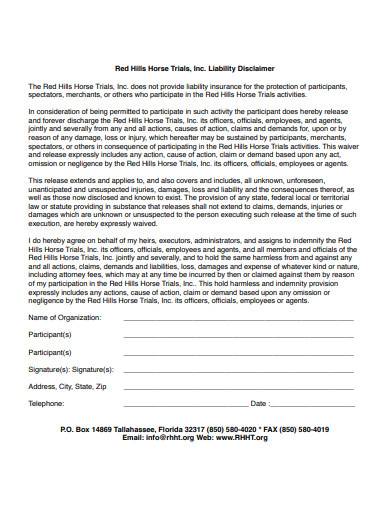As a business, you know you can’t simply get away with something just by saying you don’t know, or just by denying it. Also, running away from your responsibilities will make your business look bad. So how do you stay responsible, but not liable for untoward incidents involving your business? This is where a liability disclaimer comes into the scene. Don’t wait for your business to become liable for untoward incidents before you take action. Start learning about liability disclaimers and how you can easily make one.
What Is a Liability Disclaimer?
When you want to give out some sort of information, but you don’t want to be liable for what you’ll be saying, then it’s necessary to provide a liability disclaimer. A liability disclaimer is a statement declaring that you are not responsible or liable for anything. Disclaimers are just about everywhere, and they can be both verbal and written. When you get a warning like, “The coffee is hot. Please be careful,” that is an example of a verbal disclaimer. Written disclaimers, on the other hand, are found in websites, agreements, contracts, products, or services, and some are posted in business establishments. The word disclaimer is written before the disclaimer statement so that you’ll know what it is intended for.
When doing business, a liability disclaimer helps specify the terms and conditions of a mutual contract. A simple disclaimer that is posted in public places or establishments provides the general public with either a warning or set expectations. It also helps prevent unreasonable risks or cause harm and injury to people. With a liability disclaimer, there is a limit to the scope of obligations of a business or entity, and at the same time, protects its legal rights.
How to Make a Liability Disclaimer
Starting your own business is good, but be warned that there are a lot of things that you need to prepare before you get started. You’ll be needing a business plan, a marketing plan, investors, money to put up the business, and a liability disclaimer. Having one made for your business is costly, so you might want to consider writing one yourself. Here are some tips you can use to create an effective liability disclaimer.
1. Determine Your Need for a Disclaimer
There are many reasons why businesses use a disclaimer, and yours could be similar to the reasons of others. You should know the very reason why you are making a disclaimer. Make separate disclaimers for tangible and intangible products if you are offering both in your business. Tangible products are those you can touch, while intangible products include services that your company provides.
2. State Clear Limitations
A liability disclaimer cannot offer you full protection from any liability. It works only to limit your liability for causing harm or offense to your consumers. A disclaimer for tangible goods would warn your customers about potential dangers or hazards that come with the use of the product. For intangible assets, your disclaimer works to limit liabilities that can cause offense.
3. Include a Privacy Statement
A privacy statement can exempt you from certain obligations. There are many privacy statements that you can find online as well as on the Better Business Bureau website. For example, if your selling computer accessories, you can write in your privacy statement terms and conditions that you are not held liable for product damage due to customer’s misuse.
4. Make Customers Aware of Your Disclaimer
No matter how great your disclaimer is, it’s no good if your customers are not aware of it. Always position a disclaimer in a place that is visible to customers or the public. This is so that they’ll know what the products or services entail, and minimize accidents and complaints. Keep in mind that uninformed customers are the hardest to convince.
5. Consult a Lawyer
When your done drafting your liability disclaimer but don’t feel so confident about, never doubt getting the services of an expert. It comes with a price, but rest assured that consulting an expert, such as a lawyer, will do you more good. Doing so will even save you from getting into lawsuits.
FREE 10+ Liability Disclaimer Samples and Templates in PDF | MS Word
1. Disclaimer and Waiver of Liability
2. Product Liability Disclaimer Template
3. Product Liability Disclaimer
4. Safety Product Warnings and Liability Disclaimer
5. Food Liability Disclaimer Template
6. Product Release and Waiver of Liability Sample
7. Product Warranty and Disclaimer Template
8. Product Liability Disclaimer Example
9. Assumption of Risk and Liability Disclaimer
10. Basic Product Liability Disclaimer
11. Format of Liability Disclaimer
What is the difference between a disclaimer, and terms and conditions?
A disclaimer is not the same with terms and conditions. That is because terms and conditions are specific rules that are laid out for a legal contract or agreement, or the use of a particular website. A disclaimer, on the other hand, only reduces an entity’s responsibilities or liabilities and are not used as rules to follow.
What should I include in a disclaimer?
An effective disclaimer should disclaim any physical liability, liability for the accuracy of the information that you provide, and disclaim any third party responsibility. You can also claim ownership of your work by making an ownership statement on your disclaimer.
Liability disclaimers are not only useful in business, but it’s also used in other fields to limit liabilities. Common examples are email disclaimers, medical information disclaimers, and legal information disclaimers, to name a few. A disclaimer is a short paragraph that contains straightforward and specific sentences. You should be able to write one given the samples and tips provided above.
Related Posts
FREE 10+ Medical Waiver Forms in PDF MS Word
FREE 5+ Waiver of Moral Rights in PDF
Sample Accident Release Form
FREE 53+ Generic Release Forms in PDF
FREE 9+ Tattoo Release Forms in PDF
Sample Employee Emergency Contact Form
FREE 8+ Sample Motorcycle Bill of Sale Templates in PDF MS Word
FREE 9+ Sample Photographer Release Forms in MS Word PDF
FREE 11+ Forensic Audit Report Samples & Templates in PDF MS ...
FREE 18+ Financial Audit Report Samples Templates in PDF MS ...
FREE 8+ Sample Refund Policy Templates in MS Word PDF
FREE 9+ Sample Model Release Forms in PDF MS Word
Sample Property Damage Release Form
Sample Publicity Release Form
Sample Change Request Form
